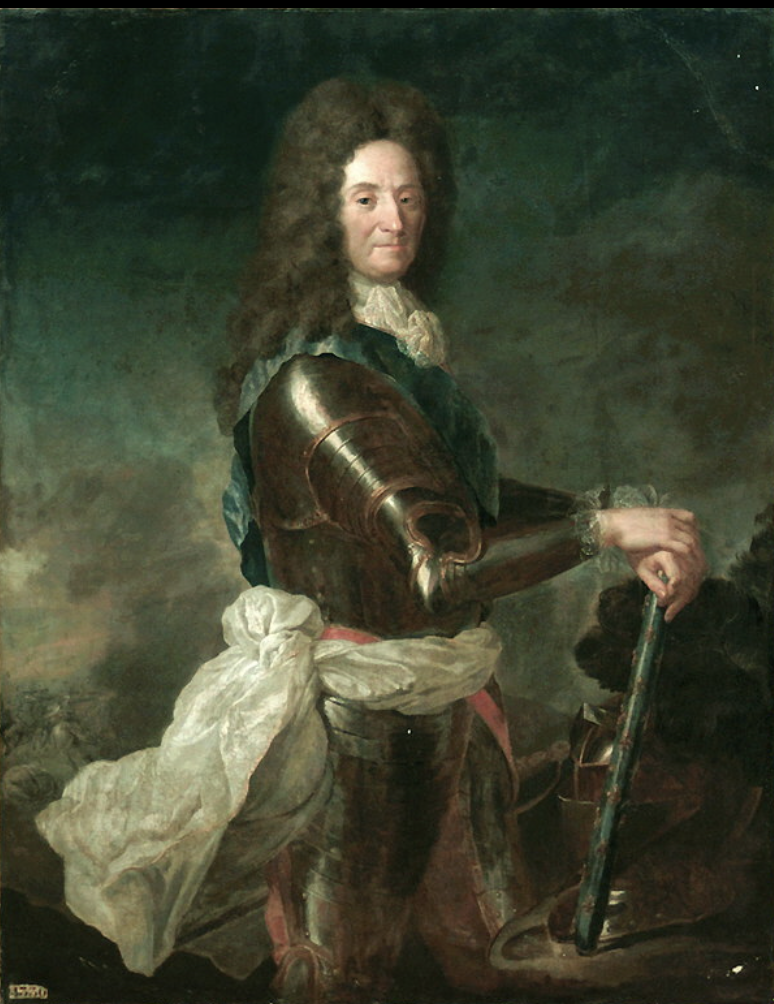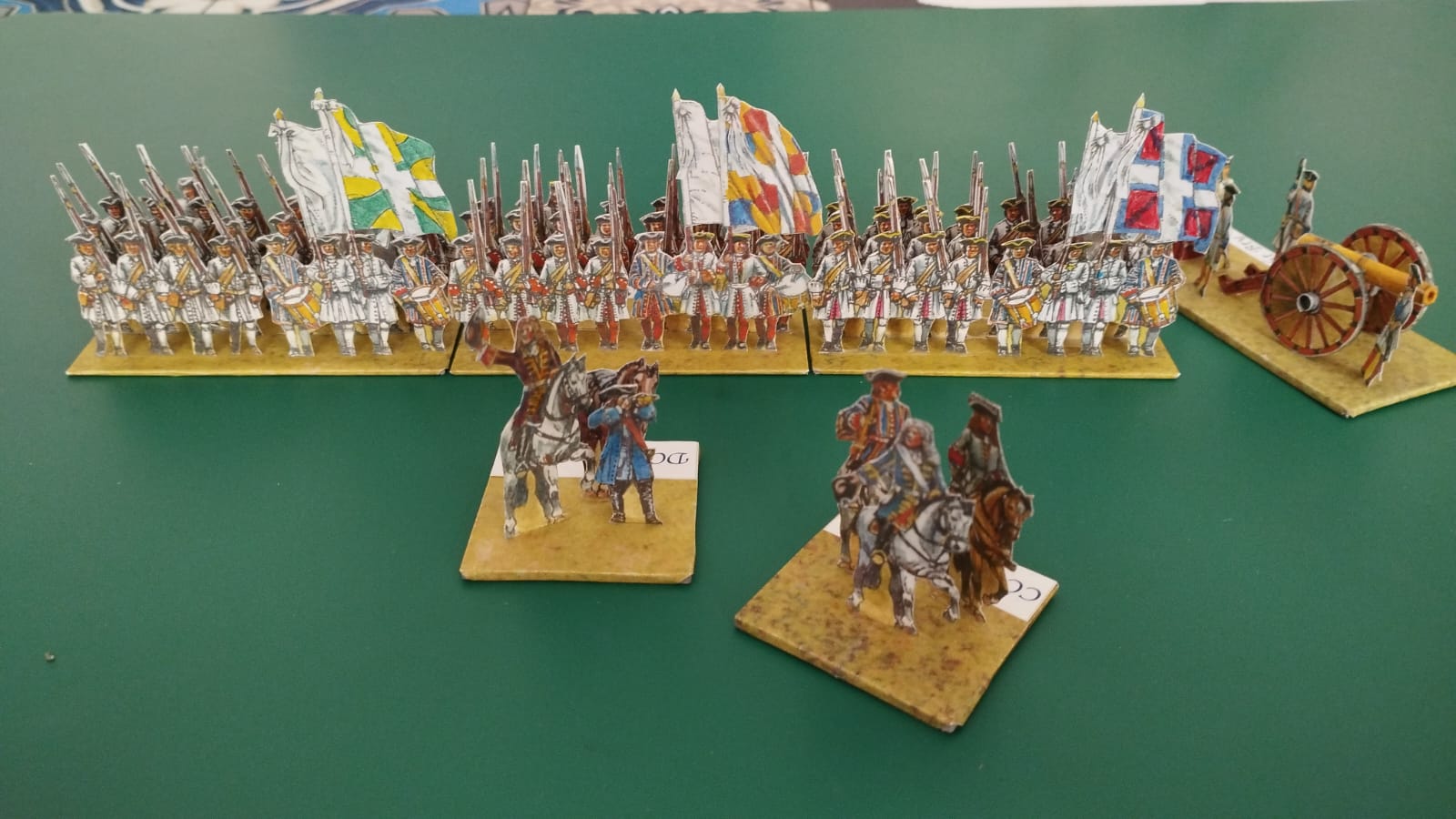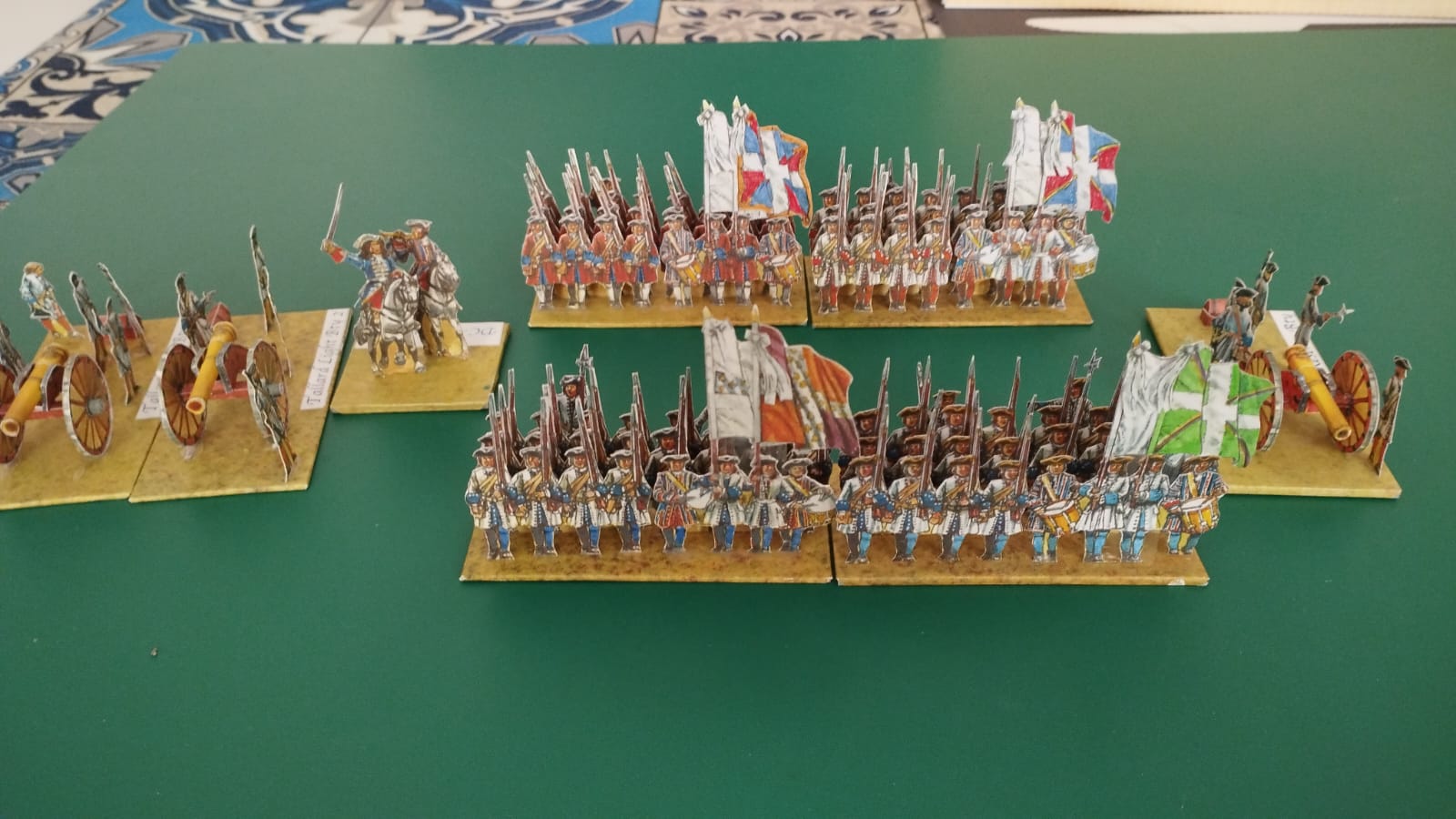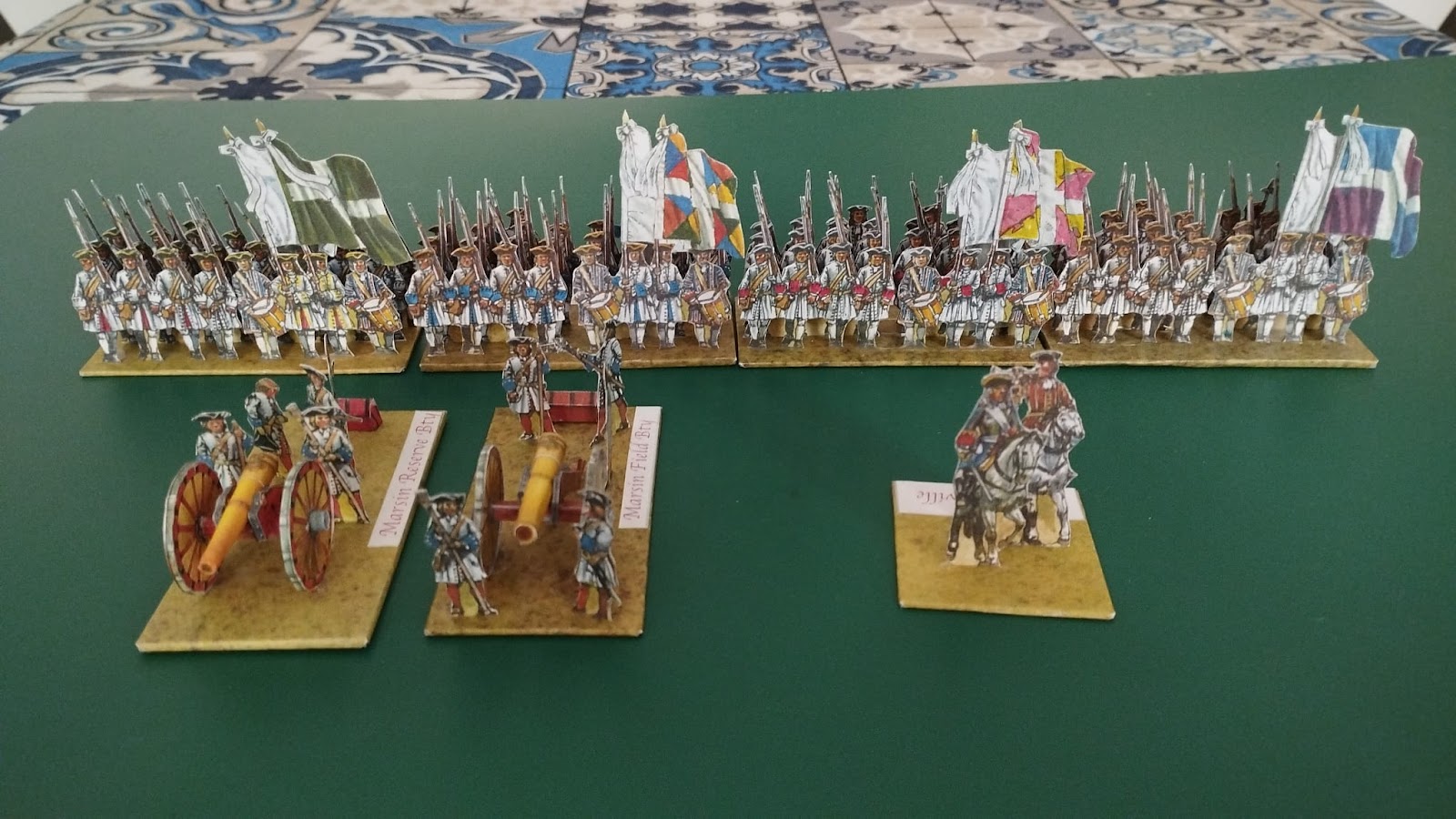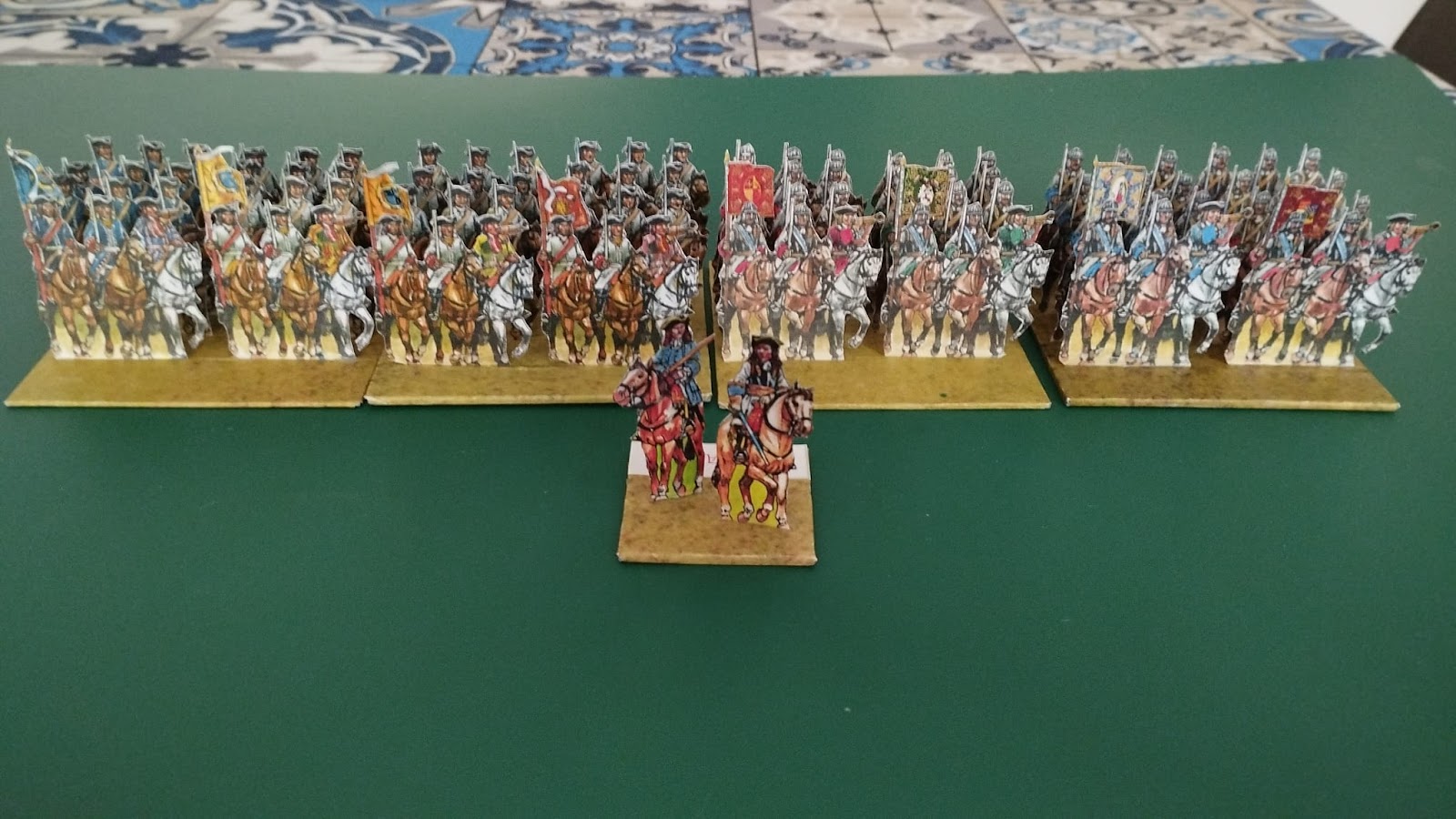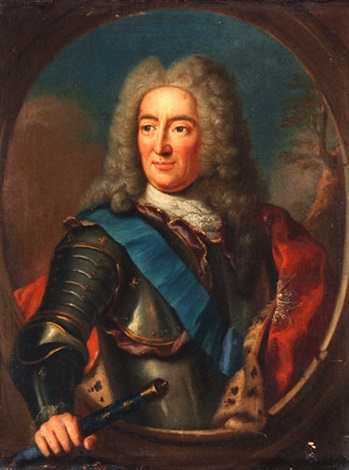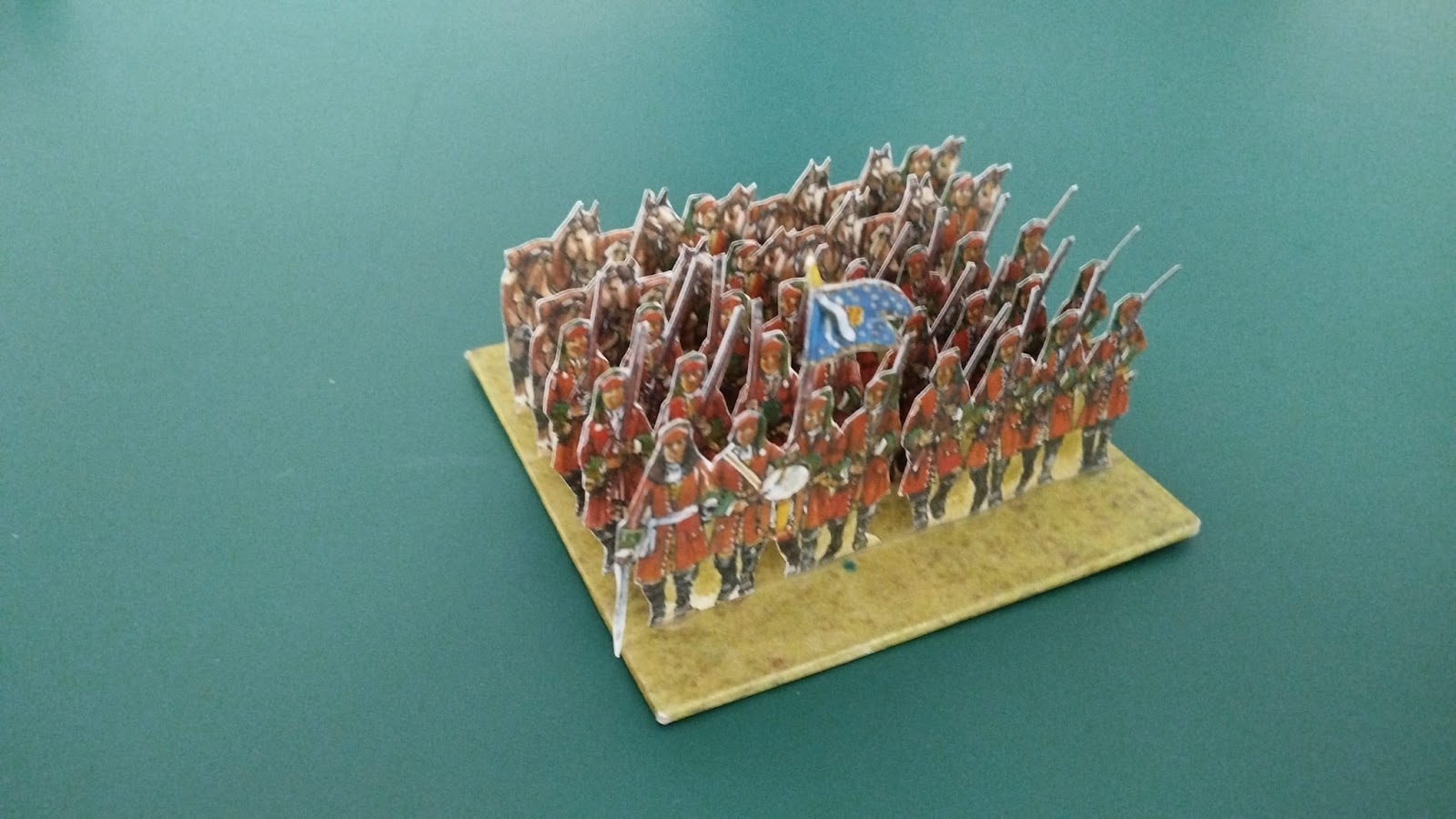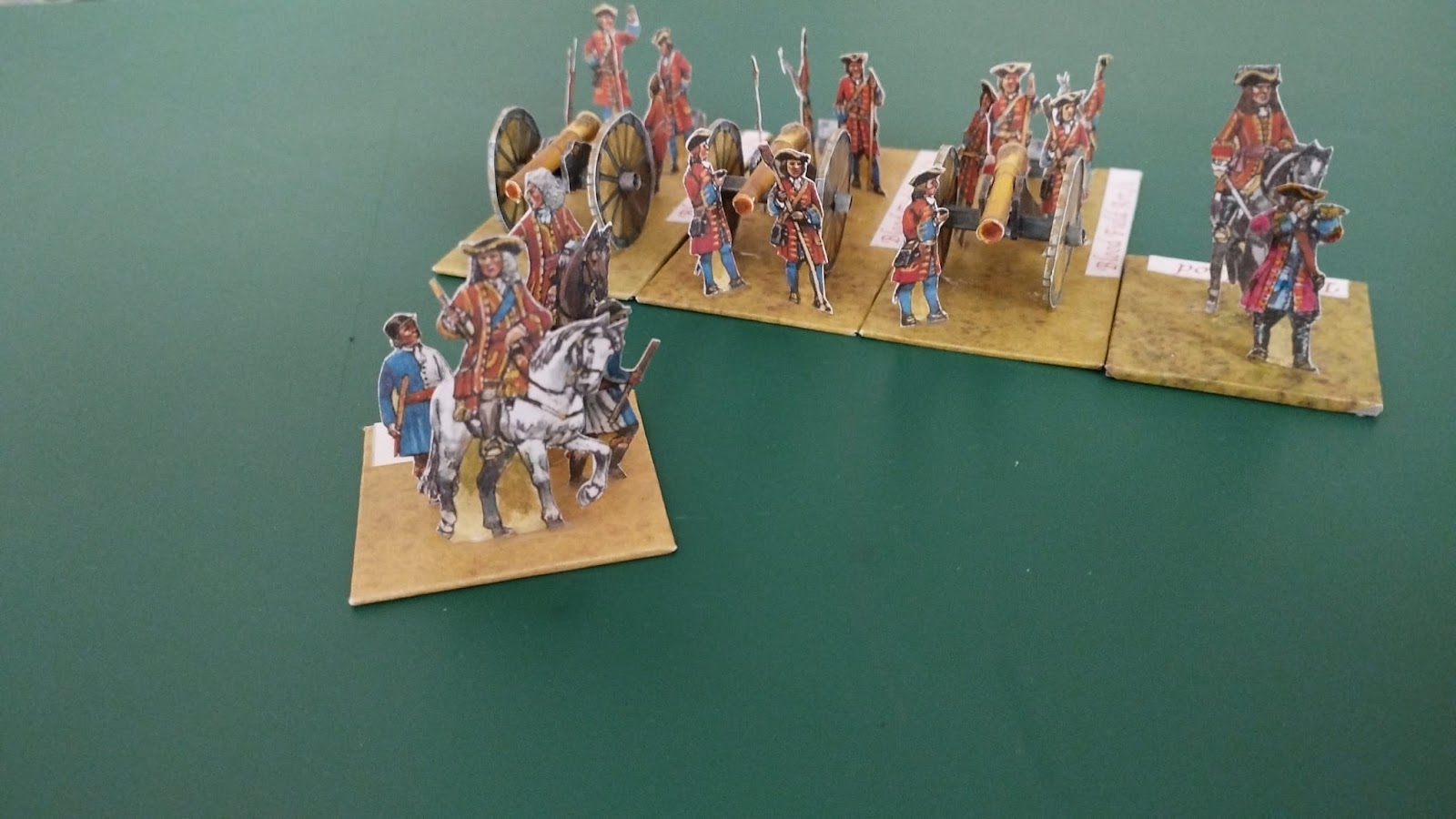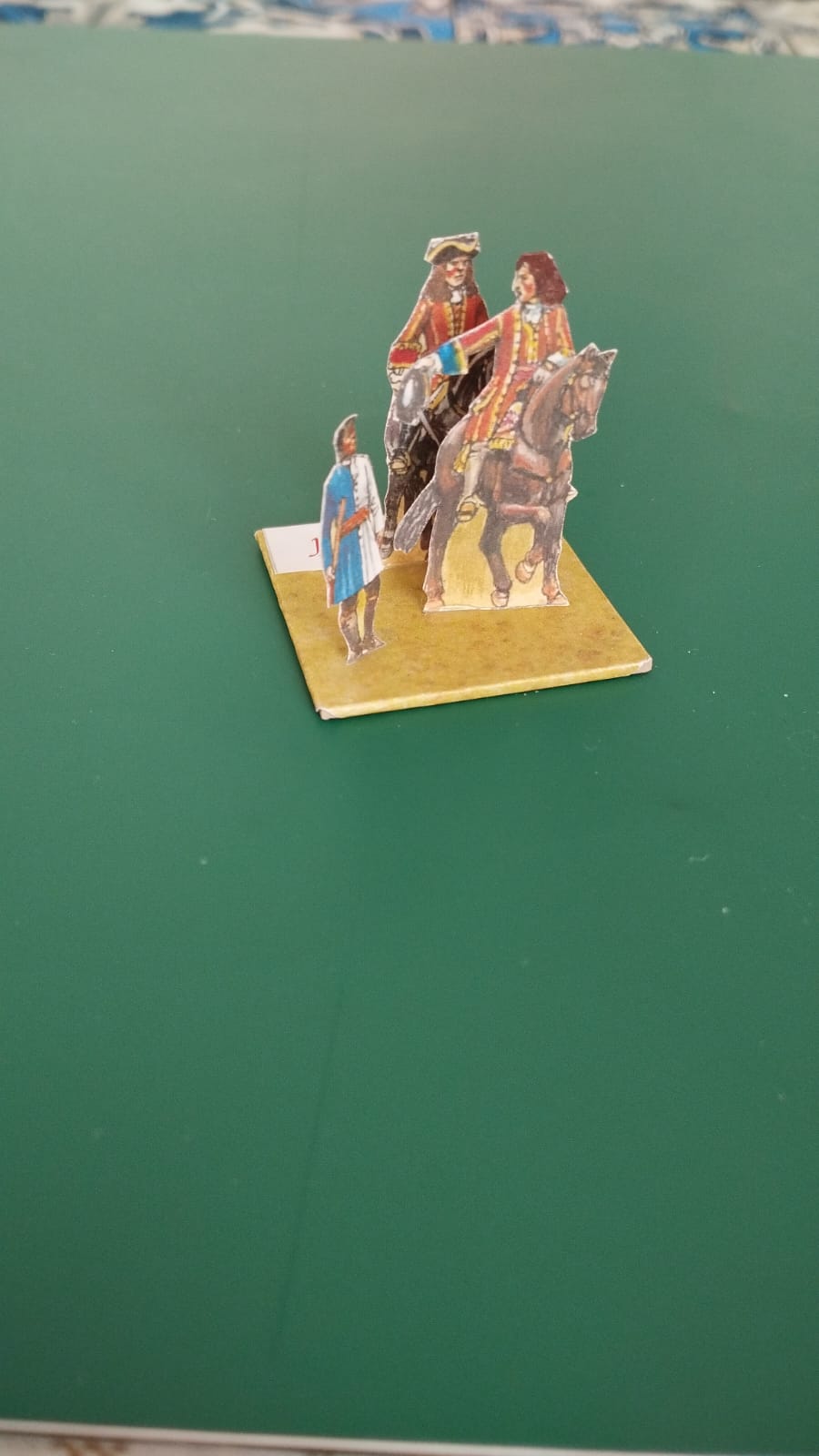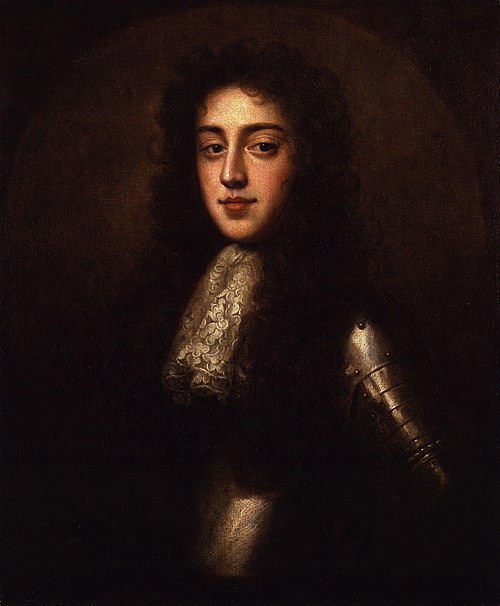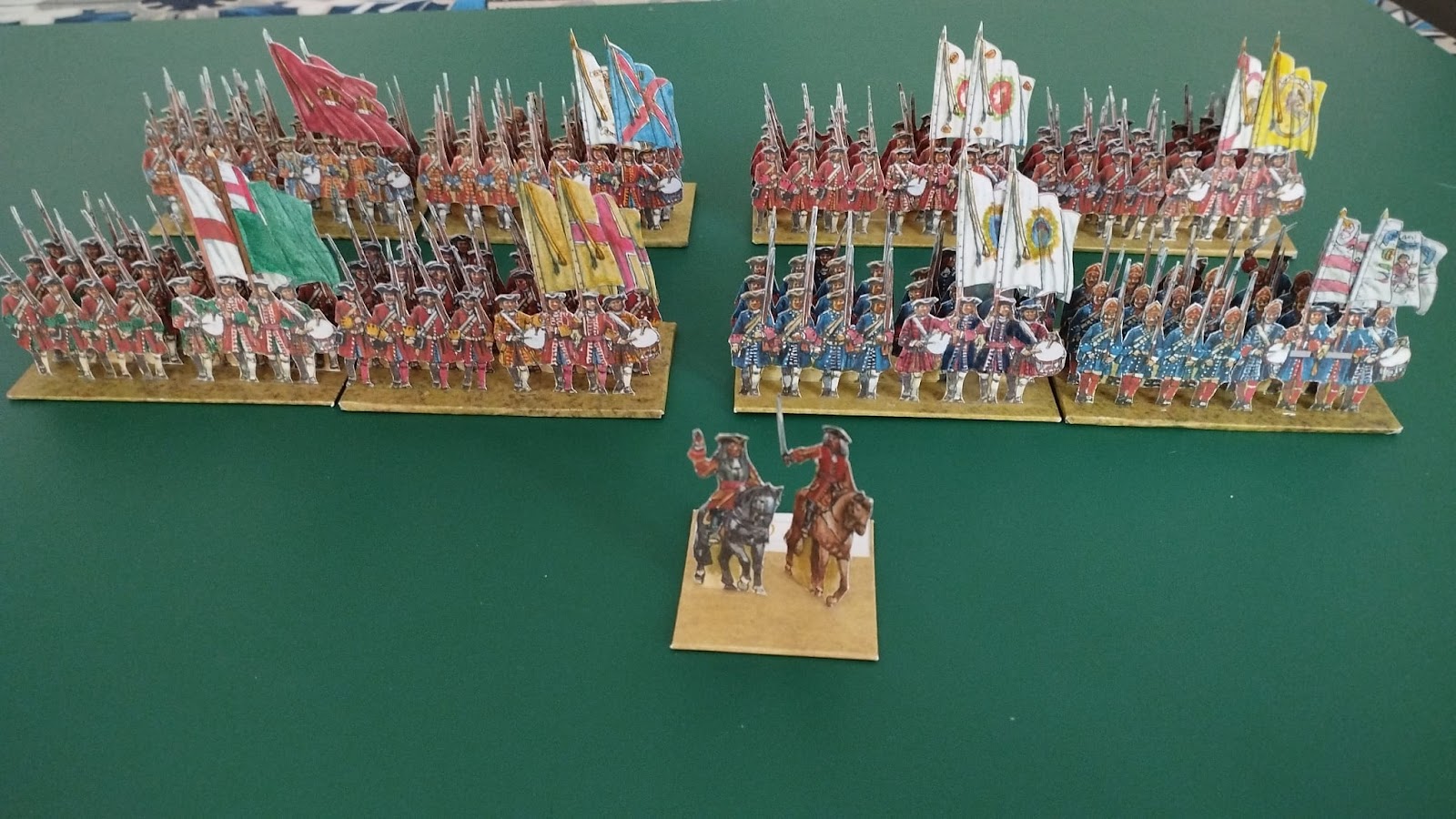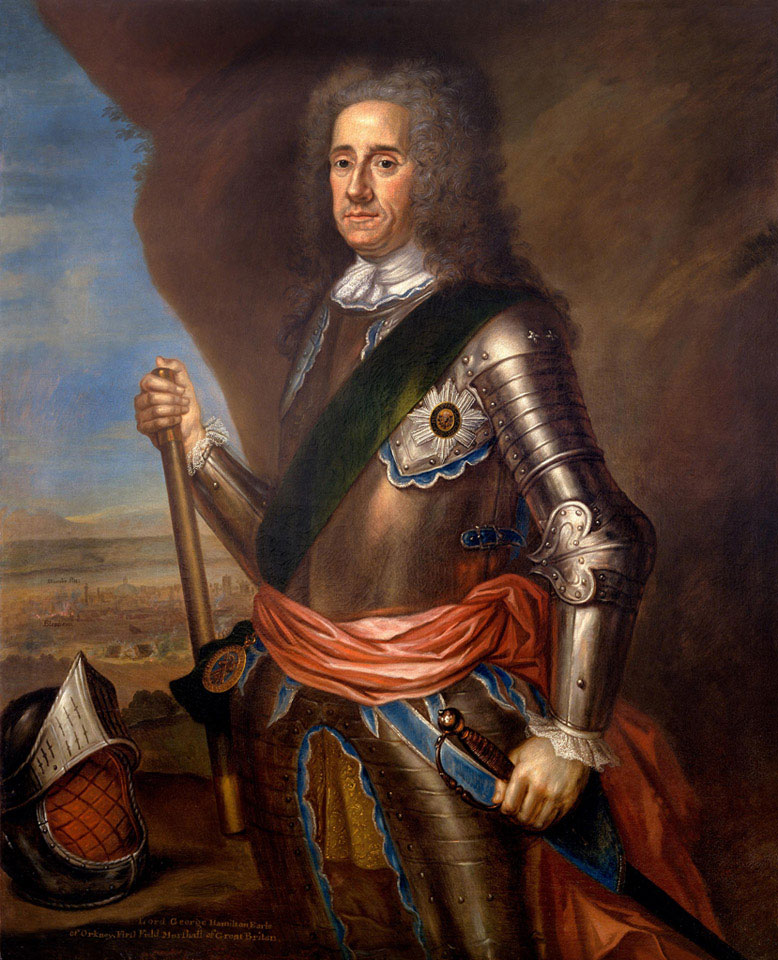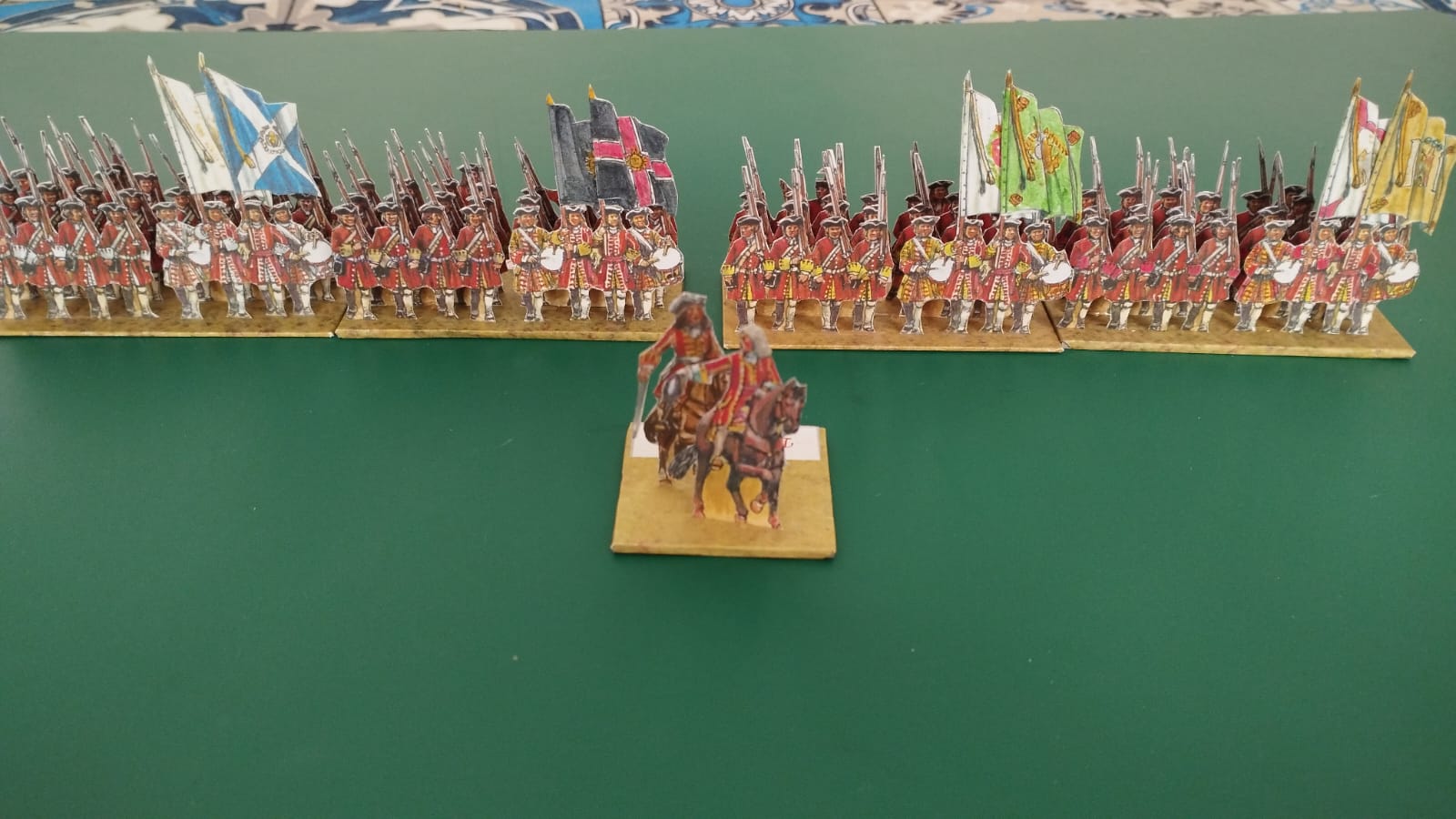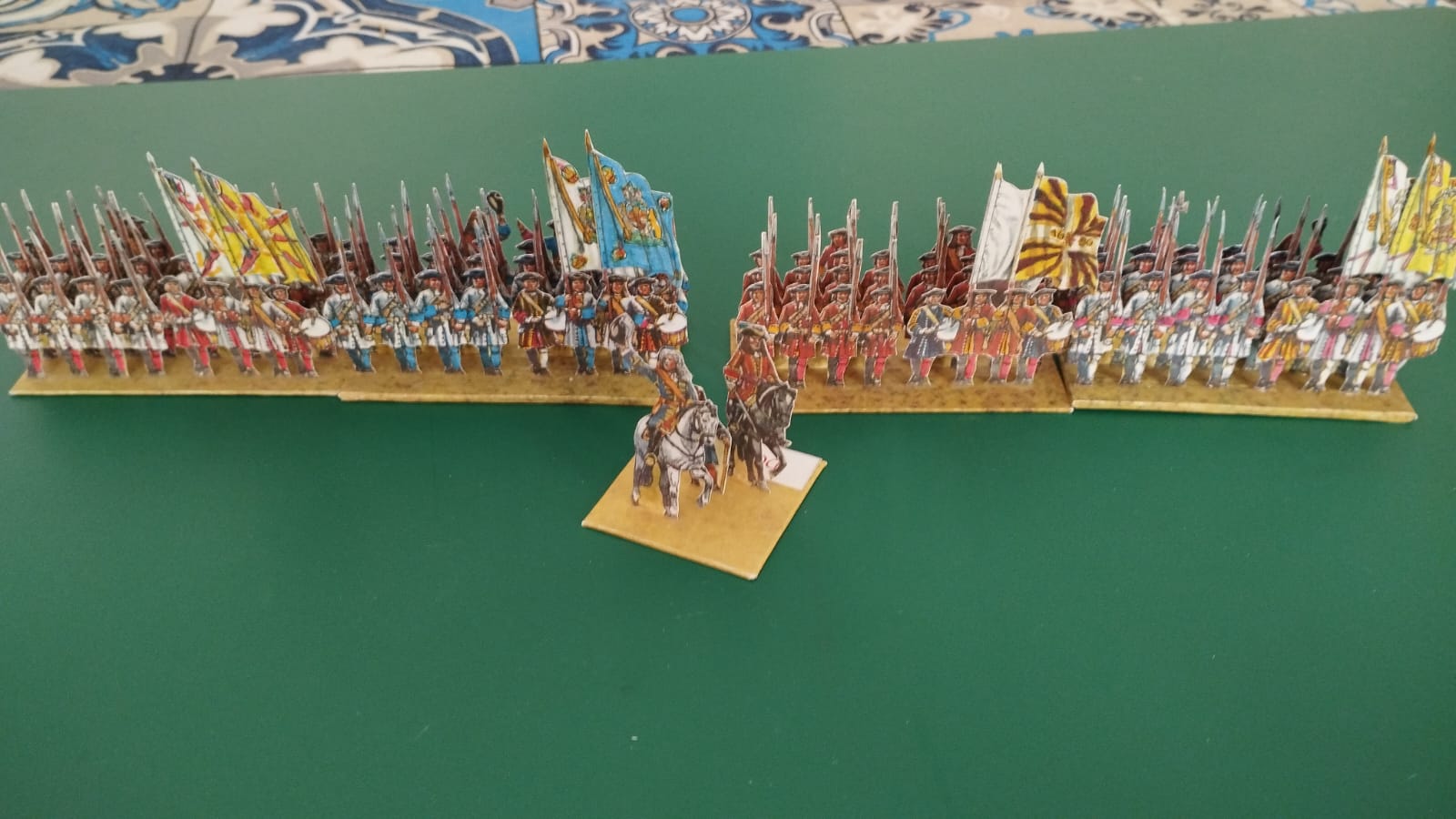The Marshall Tallard, captured during the battle and liberated in 1711: his performance at Blenheim was under his previous standards.
The main body was commanded by the Lt. Gen. Marquis de Montpeyroux: the left cavalry division, under the Duc d’Humieres was formed by the brigade Merode/Silly (left), represented by the two Spanish regiments Acosta and Gaetano and the brigade La Valliere (regt. Orleans and Bourgogne); the right wing cavalry, under Lt. Gen. Comte de Zurlauben: it comprises the Vertilly brigade (Gendarmerie) on the left and the brigade Broglie/Grinan (regt. Du Roi and La Baume) on the right.
This is a bust of Béat-Jacques de La Tour-Châtillon, Comte de Zurlauben, a veteran and competet Swiss officier that was killed at the battle.
The left wing infantry, that in the battle was on the third line between Blenheim and Oberglau, was commanded by the Marquis de Saint-Pierre. It was composed mainly by fresh recruits which, however, performed heroically being cut to pieces by the Allied cavalry. From left to right: brigade Trecesson (regt. Albaret), brigade Breuil (regt. Auxerrois), brigade Belleisle (regt. Nice) and a light battery. D’Albaret was raised in 1702 and destroyed at Blenheim, his colonel killed and hence disbanded in 1704; Nice was instead a Piedmontese regiment.
The right wing infantry was the main Tallard infantry reserve which was swallowed uselessly into Blenheim by Cleràmbault: it was at the orders of Lt. Gen. Marquis de Marinvaux. In the first lime the brigade D’Enonville (regts. Royal and Boulonnais); in the second line brigade Montroux (regt. Montroux) and Monfort (regt. Blasois) plus two light and an heavy artillery batteries. The red-coated Montroux was a Italian regiment.
The Blindheim garrison under Maestre-de-Camp de Blansac: from the left (behind entrenchments) brigade Hautefeille of dismounted dragoons (regt. Rohan-Chabot), in the town the brigades de Maulevrier (regt. Navarre) and Greder (regt. Greder Allemand). Blenheim is represented by a double-based town and hence can be occupied by four brigades.
From left to right, as usual, brigade Balincourt (regt. Artois), brigade D’Argelos (regt. Santerre and regt. Languedoc), brigade Saint-Segonde (regt. Zurlauben) supported by a light and a field batteries. Zurlauben was a Wallon regiment, annihilated at Blenheim and never reformed, its Colonel Comte de Zurlauben being killed at the battle.






















